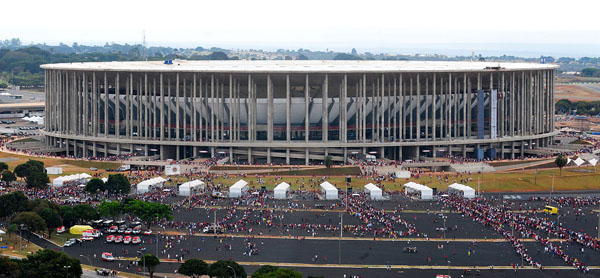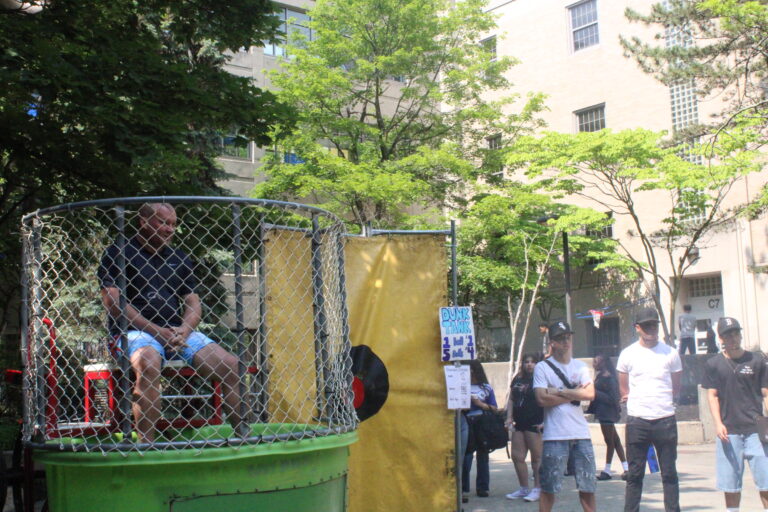
It was highly anticipated that at least four of the 12 stadiums that Brazil built to host the 2014 World Cup would quickly become something of white elephants after the tournament ended. Still, the scale of at least four of the stadiums’ neglect less than a year after the World Cup ended should be a staggering warning to countries that pay loads of money to host these events.
According to NPR’s Lourdes Garcia Navarro, the four most controversial stadiums Brazil built for the World Cup are struggling to attract enough income to keep them stable. The stadiums in Natal and Manaus, both built in part with public funding, are up for sale to private companies because they haven’t brought in enough money. In Cuiaba, the site of a $250 million venue, the stadium has been shut down over safety issues. But the most shocking example of Brazil’s World Cup problems is in the capital city of Brasilia, where the most expensive of the country’s stadiums is now serving as a parking lot for public buses.

These problems were inevitable even before the tournament began, with such prices of construction. However, the simple idea of Brasilia’s Estadio Nacional serving as a bus lot is striking: an increase in transportation fares was one of the triggers for protests all across the country as it got closer to the World Cup. Brazilians took to the streets, asking why the country was spending so much money — a total of $3 billion on the sports stadiums — while raising some prices and neglecting public services.
Brasilia itself is indicative of this problem: most schools in Brazil lack adequate facilities. Now, the stadiums are again showing those same problems, as a declining economy has led to budget cuts and upcoming tax increases while four venues sit empty and barely used less than a year later.
The problems around the four stadiums are even more noticeable next to the other unfulfilled promises of Brazil. The government promised that it would invest heavily into long-term infrastructure projects such as airports, roads, light-rail systems and so on, that would leave a lasting legacy aside from the soccer stadiums. However, a released government report said that Brazil overspent on stadiums by $1 billion while also failing to complete most of the projects. Of 35 proposals, only five were complete by the beginning of the tournament. The legacy of Brazil’s World Cup, it seems, is a disaster of consequences that its own people saw coming.
Brazil is now rapidly preparing to host the 2016 Summer Olympics in Rio de Janeiro, and its planned $10.6 billion in the budget for that event includes another $2 billion on sporting venues, according to proposals. The government report insisted that the infrastructure projects will eventually be completed, and there will be more planned around the Olympics. Although there is pressure to complete Olympic construction on time, along with the budget cuts and the failures around the World Cup period of time. These past failures have raised obvious concerns that the long-term projects with wider public benefits will continue to suffer.
Link to original photo here:
More information on the topic can be found here:



